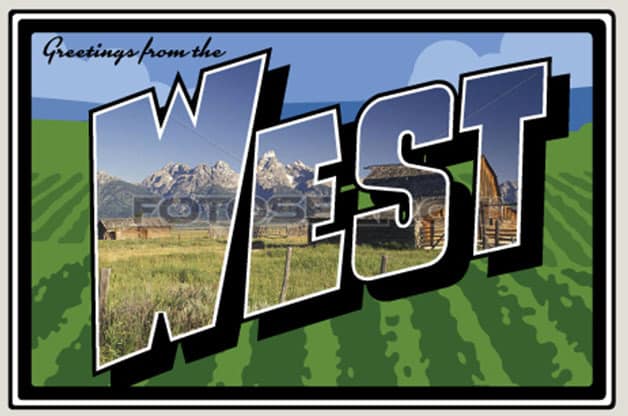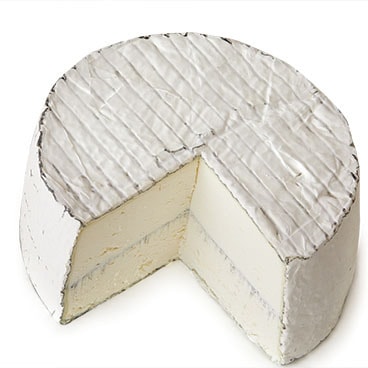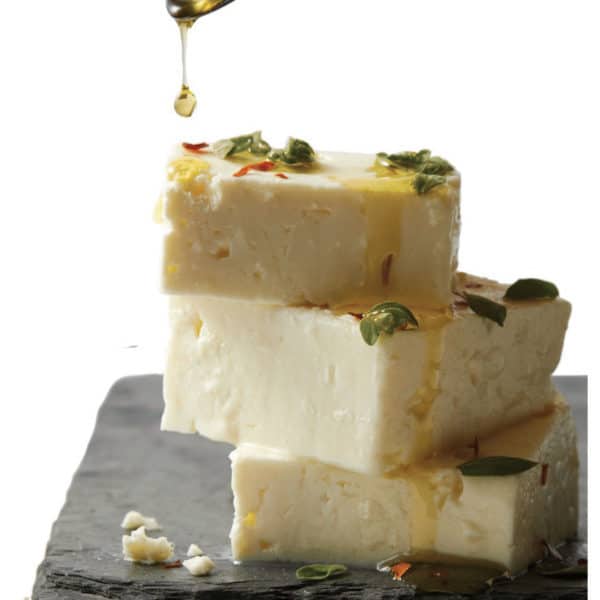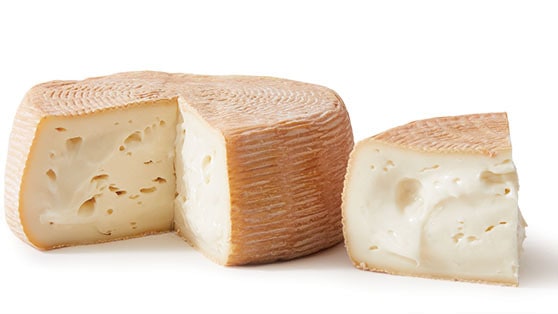
For our 2017 list of The Best Cheeses of the Year, we turned our focus to the good ol’ US of A! Here, we share our top picks for wedges and wheels in the Northeast, South, Midwest, and West. Find the best of what your area has to offer, explore what makes each cheese special, and learn what the experts pair it with.
Written by Amanda Rae Busch, Lynn Freehill-Maye, Seánan Forbes, Nicole Haase, Hannah Howard, Kristine Jannuzzi, Kara Kaminski-Killiany, Melissa Paesan, Bridget Shirvell, and Marimar Toledo.
Photographed by Evi Abeler | Styled By Kristin Stangl | Illustrated by Neal Aspinall
BLACKSTONE
Bellwether Farms, Petaluma, Calif.
Named for its resemblance to the volcanic rock outcroppings surrounding the dairy, Bellwether Farms Blackstone boasts a peppercorn-studded paste and striking black rind. Jersey cow’s milk brings round, caramel-sweet notes to the wheel, while milk from the farm’s herd of East Friesian sheep adds earthy minerality. Rubbed with a blend of vegetable ash, ground black pepper, and rosemary, the rind lends a pungent, herbal finish and an eye-catching appearance when the cheese is served.
+pair it
Classic Roman dish cacio e pepe begs for Blackstone’s peppery, flaky paste. Toss cooked noodles with butter, add a few handfuls of grated Blackstone, and presto: perfect pasta.
CLASSIC CHÈVRE
Briar Rose Creamery, Dundee, Ore.
Rich and creamy with hints of sesame seed, vanilla, and alfalfa, Briar Rose Creamery Classic Chèvre is reminiscent of vanilla ice cream with a savory edge. Its luscious, spreadable texture and citrusy kick elevate salad, scrambled eggs, and even cheesecake. This chèvre shines solo, too. Cheesemaker Sarah Marcus pairs it with hoppy beer or pinot noir. “The acid in the cheese balances the floral and bitter notes in the beer…vanilla notes are highlighted (when pairing with pinot noir),” she says. A solid drinking buddy, indeed.
BEBÉ
Laurel’s Crown Cheese, Othello, Wash.
Featuring notes of pasture, hay, and toasted nuts, Good Food Award winner Bebé packs a flavorful punch that belies its relative youth (aged just three to six months). Cheesemaker Laurie Neal has been making the Asiago-inspired, grass-fed cow’s milk wheel at her Washington State creamery since 2013—an upstart compared to its Italian PDO relative, crafted in Italy’s Veneto region since the fifth century.
ALTO VALLE
Lark’s Meadow Farms, Rexburg, Idaho
Thistles—prickly wild weeds topped with purple flowers—grow all over Lark Meadow Farms in southeastern Idaho. So founding member and cheesemaker Kendall Russell puts the plants to good use by transforming them into rennet for the farm’s Alto Valle. The homegrown ingredient lends wheels a vegetal flavor with notes of artichoke and cauliflower, making the cheese a flavorful foil for potato tarts and other baked dishes.Although thistle rennet has long been used by cheesemakers in Europe, the process is rare enough stateside that it took “a lot of trial and error and…about three years to get it to work,” says Russell, a trained microbiologist. Such perseverance paid off: Alto Valle has collected accolades including a 2017 Good Food Award.
HUMBOLDT FOG
Cypress Grove, Arcata, Calif.
Cheesemakers often say that producing an award-winning wheel is a dream come true. Cypress Grove founder Mary Keehn, however, means that literally when discussing perennial award-winner Humboldt Fog: The idea struck while she was fast asleep over the Atlantic Ocean, returning from a trip to France with Judy Schad of Capriole Goat Cheese. “It was my first visit to Europe, and everything from the lavender fields in full bloom to the red and black Swiss Alpine goats at the farm we visited made a lasting impression,” Keehn says.
However, her dream “consisted of only an image—there was no make sheet attached,” she says. So Keehn got to work.Launched in 1993, soft-ripened Humboldt Fog—named because the wheel’s central layer of vegetable ash resembles the ocean vapor that surrounds the creamery in Northern California—was “one of the first mold-ripened goat cheeses (in the United States) and, perhaps, the first using ash,” Keehn notes. It didn’t take long for creamy, tangy, floral Humboldt Fog to start netting awards; the cheese has earned nearly 20 accolades at various competitions since 2010, including top honors at the United States Championship Cheese Contest this year.
“One thing I love about Humboldt Fog is the way it changes over time and with different care,” Keehn says. “Tucked in the back of your fridge wrapped in wax paper, it will become quite dry and can be grated on a salad. Wrapped in plastic and kept at a slightly warmer temperature, it will become luscious and goopy.”
GOUDA WITH GREEN OLIVES AND PIMENTO
Glanbia Nutritionals, Blackfoot, Idaho
After a few fourth-place finishes since its creation in 2013, this firm, silky-smooth, sweet-bitter cheese finally clinched a medal at the 2017 United States Championship Cheese Contest. Made using dry salt instead of brine, milk sourced from within 50 miles of the eastern Idaho production plant, and proprietary cultures that maintain consistent flavor development, this wheel is a reliable crowd-pleaser. Sliced olives and pimentos added to the curd lend a pretty, speckled-green appearance to the smooth 40-pound blocks, as well as briny, slightly sweet bursts that mingle with traditional Gouda flavor.
+pair it
Ideal for snacking, adding to sandwiches and salads, or serving on a cheese board, Gouda with Green Olives and Pimento pairs well with Dutch-style beer or robust red wine.
GHOST PEPPER JACK
Southwest Cheese, Clovis, N.M.
Creamy, semi-soft, and bursting with the unmistakable yet approachable zing of fresh ghost peppers, this flavored Monterey Jack is at the top of its class. “Pepper Jack is one of our core cheeses, meaning we make a lot of it,” says Kat Crozier of Glanbia Nutritionals, a parent company to Southwest Cheese. “We consider it one of our specialties—one of the best cheeses in our portfolio.” Judges at the United States Championship Cheese Contest agree (as have numerous others in years past), awarding this block cheese with a slightly open texture and piquant Southwest flavor Best of Class with a near-perfect score.
+pair it
While Ghost Pepper Jack shines in melted applications that beg for a kick—hola, enchiladas!—the cheese shines with crunchy apples, too. “The spice of the cheese and the sweet fruit complement each other in a great, weird way,” Crozier says.
SHEEP’S MILK RICOTTA
Fruition Farms Dairy & CreameryLarkspur, Colo.
Chef Alex Seidel opened Fruition Restaurant in Denver in 2007, bought a 10-acre farm just south of the city in 2009, and established the state’s first artisanal sheep dairy and creamery less than a year later. “Since there were no Colorado sheep’s milk cheeses (at that time), we’d have these beautiful, braised local lamb shanks and finish them with some chèvre, and we got to thinking, we’re in the land of lamb and no one is doing this, so why not?” says Jimmy Warren, Seidel’s former sous chef and current head cheesemaker and partner at Fruition Farms.
The first cheese they produced was this luscious, fluffy sheep’s milk ricotta—made from whole milk rather than whey—with a delicate sweetness and nuttiness. Spoon dollops on top of pasta and pizza, combine it with fresh fruit jams on toasted bread or in crêpes or add it to a fried green tomato panzanella salad, as Warren does in summer. “Ricotta cheesecake with this stuff will blow your mind,” he adds. We believe him.
FETA
Tucker Family Farm, Victor, Mont.
Since Tucker Family Farm began producing it in 2015, this 100 percent sheep’s milk feta has become a fast favorite in the local community. “We can’t make enough of it,” says cheesemaker Allison Dembek. “I think a lot of people are used to store-bought feta, which is drier because it’s usually made with cow’s milk, but ours is crazy creamy! And it definitely has a bite to it.” The milk comes from the farm’s flock of East Friesian sheep.
“They’re all grass-fed and pasture-raised. We pride ourselves on really happy, healthy animals, so it starts there for us and carries through all the way to our cheese,” says Dembek. The whey is used to make the brine for the feta, and Dembek likes to mix the tangy liquid with olive oil to make a crisp salad dressing.
DON FROYLAN QUESO OAXACA
Ochoa’s Queseria, Albany, Ore.
Zoila Ochoa learned to make cheese from her father while growing up in Michoacán, Mexico. When she and her husband, Froylan, moved to Oregon with their children in the late 1990s, they carried on her family’s tradition and began making queso fresco at home. Froylan dreamed of eventually opening a small creamery, but he passed away in 2001. His son, Francisco, worked together with his mother and siblings to realize his father’s vision, and they launched Ochoa’s Queseria—the first Mexican-style cheese factory in the state—in 2002.
Today, Francisco runs the company and produces about 8,000 pounds of cheese a week under the brand name Don Froylan, in honor of his father. Their Queso Oaxaca, a hand-pulled string cheese that is slightly saltier and tangier than mozzarella, is among the bestsellers. “It’s almost limey in flavor,” says Francisco. “And it melts really well.”
DREAM WEAVER
Central Coast Creamery, Paso Robles, Calif.
Central Coast Creamery owner Reggie Jones has worked in the dairy industry for 26 years, but Dream Weaver is the first washed-rind cheese he has produced since opening his own business in 2012. “I’ve had the recipe in my head for a long time. I knew it would be good, but it turned out even better than what I thought we could do. The flavor profile is tremendous.” The pudgy, yeasty goat’s milk cheese is stinky but approachable, with a rind that’s dry to the touch. The basket weave on the exterior of the roughly three-pound wheels is partially what inspired the evocative moniker. “We’re always looking for something that people will remember, and I don’t think there’s a more catchy song than ‘Dream Weaver,’” says Jones. “Every time we tell somebody the name of this cheese, they start singing it.”
+pair it
ACS CCP and cheese specialist Erin Harris suggests topping creamy, slightly meaty Dream Weaver with a sweet and tangy tomato jam. “The jam will help cut through all that richness in the cheese, and together create a nice balance of sweet and savory,” she says.
ECHO MOUNTAIN BLUE CHEESE
Rogue Creamery, Central Point, Ore.
Echo Mountain is Rogue Creamery’s only mixed-milk blue, and owner David Gremmels believes the ratio of goat’s milk to cow’s milk—20 percent to 80 percent—is what makes this cheese so special. “I describe (the flavor) as a triad of peppercorns,” he says. “And there are these lovely citrus notes that come through because of the goat’s milk. It’s truly velvety in texture, so it really has a nice mouthfeel.” He suggests using Echo Mountain in a blue cheese butter to finish lamb, or tossing it in a salad with sliced mushrooms and fresh herbs. When pairing the tangy blue with beverages, Gremmels says bigger is better—opt for a full-bodied, spicy petite sirah or tempranillo from Oregon.








